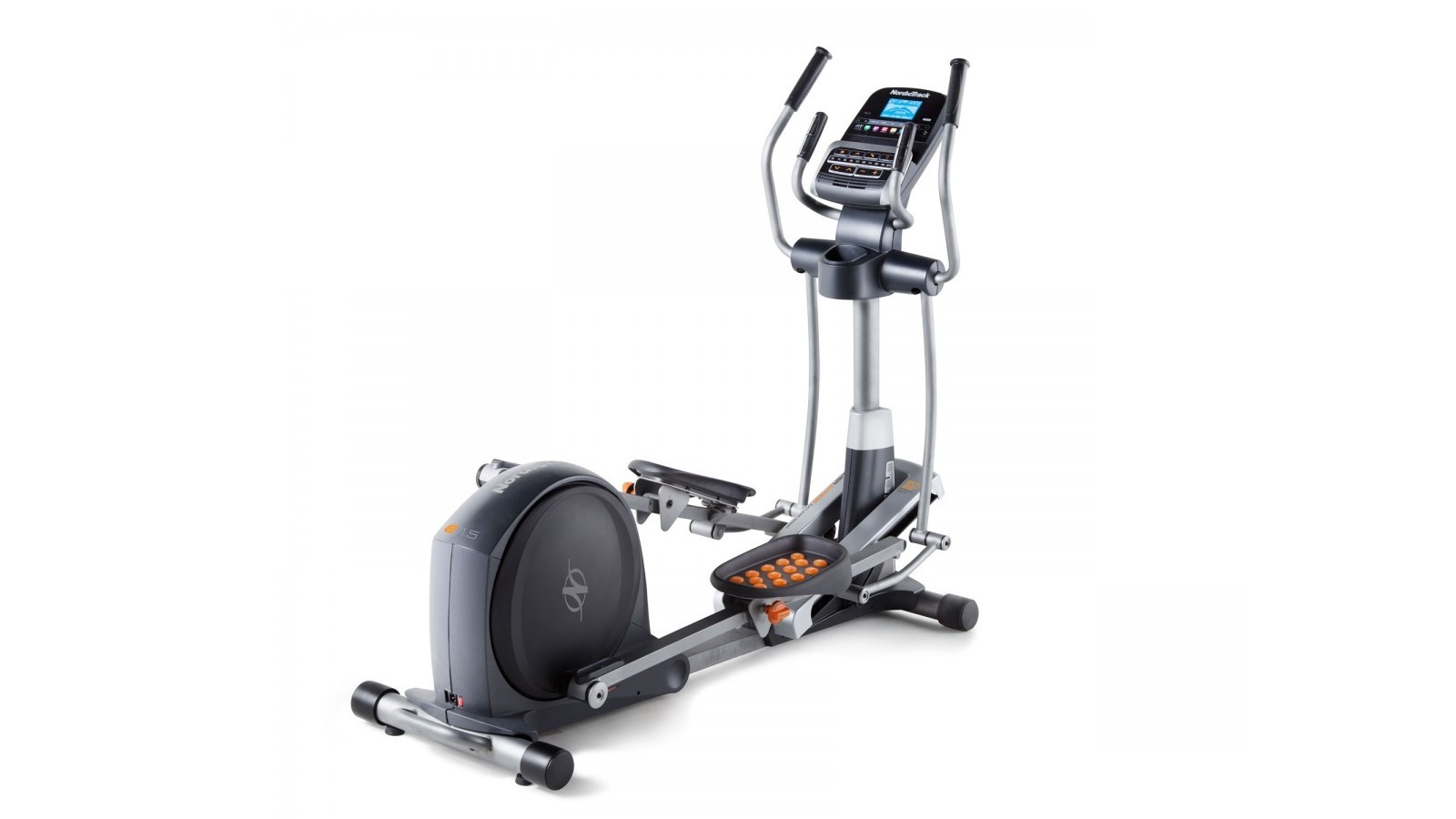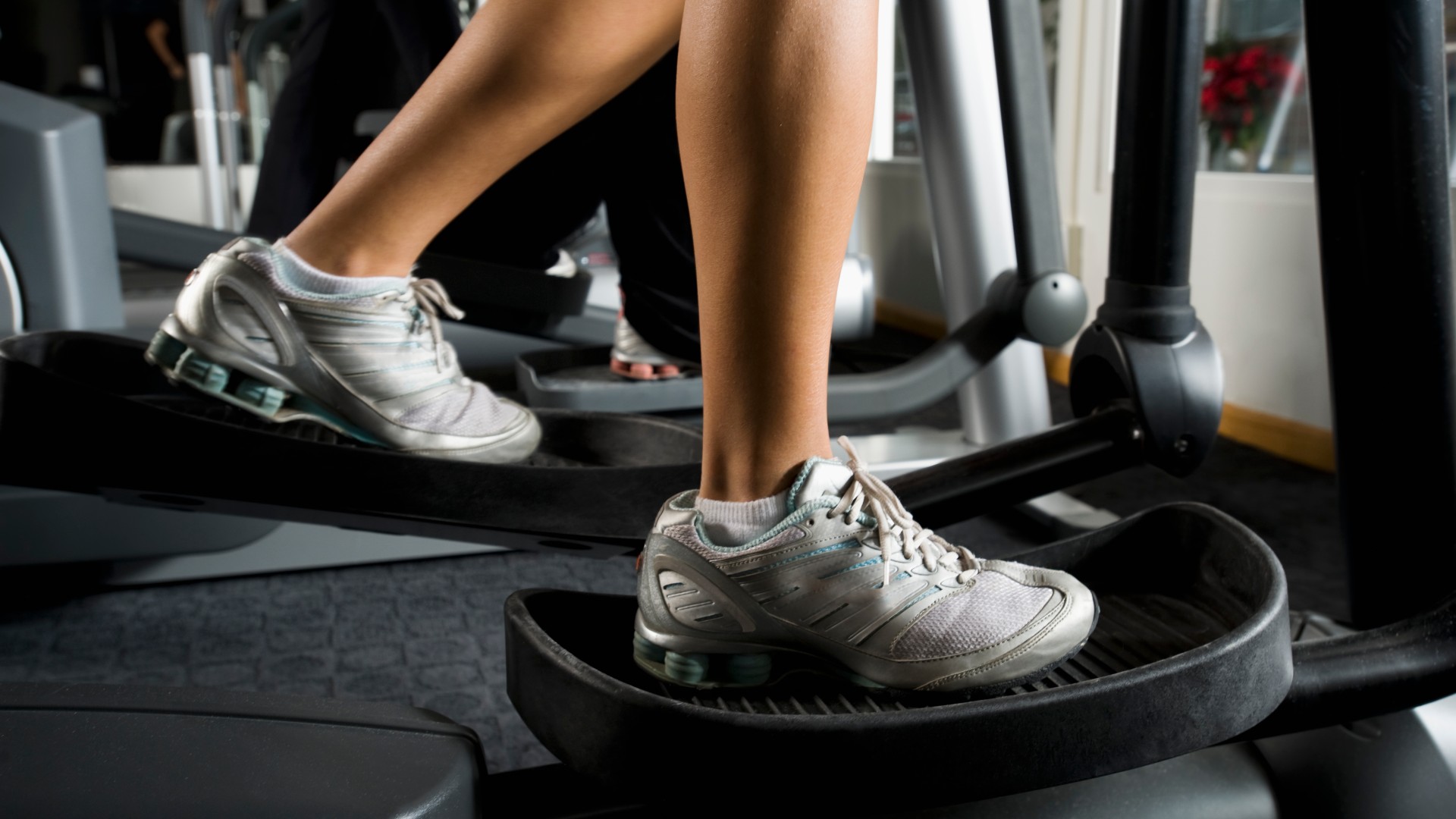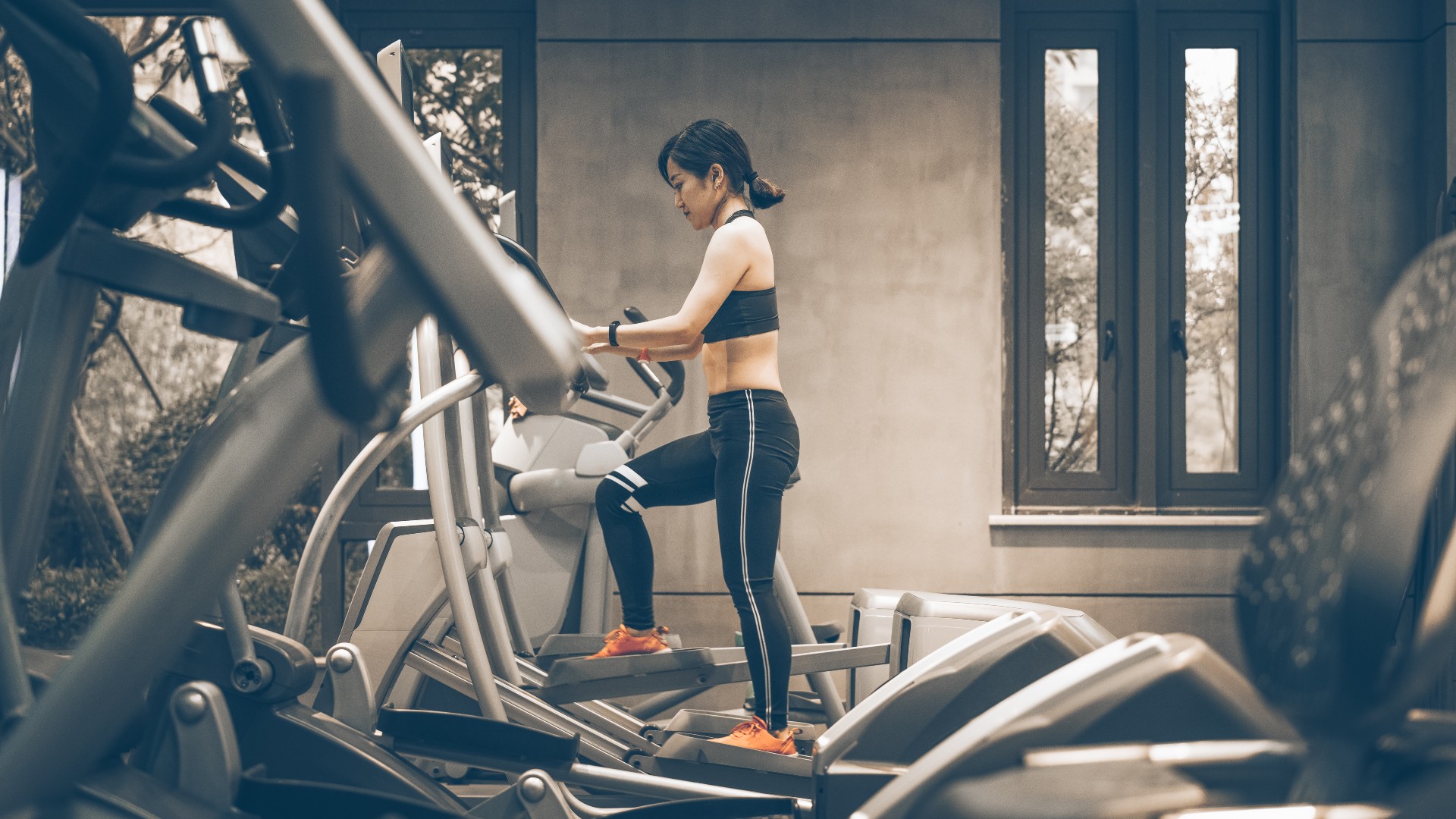How to use an elliptical machine: top tips for safe, effective workouts
Learn how to use an elliptical machine properly with this expert guide to form, safety and more


Keen to know how to use an elliptical machine, but unsure where to start? Let us help you.
If you've been considering hopping on one at your local gym, or even thinking about investing yourself (take a look at our pick of the best elliptical machines for home use if that's the case), this guide will reveal everything you need to know.
The elliptical machine - also known as the cross trainer - is a cardiovascular machine focused on improving users’ aerobic fitness. It's one of the best exercise machines to lose weight on, too.
One of the key benefits of elliptical machines is that they allow users to train at a high intensity without overloading their joints, thereby offering a low impact workout, according to Steven Virtue, Fitness Development Manager at Total Fitness.
This is ideal if you want to train hard without causing harm to your body. Or, if you're recovering from injury and don't want to go throw yourself into brutal workouts yet, still want to break a sweat.
We spoke to Steven to find out more about how to use an elliptical machine to reap all the benefits it has to offer.
How to use an elliptical machine: understanding the different components

Before climbing on to that slightly odd-looking frame, it's a good idea to get to grips with the various parts to ensure you understand how to use an elliptical machine safely. The model shown above - the E11.5 from workout equipment specialists Nordictrack - has all of the parts mentioned below to help illustrate.
Start your week with achievable workout ideas, health tips and wellbeing advice in your inbox.
Virtue explains that two key components of ellipticals are the pedal arms and arms bars. The pedal arms move with the user whilst on the cross trainer and - as the name suggests - are the part with the foot pedals attached to them. Meanwhile, the vertical arm bars stay still and upright.
'Both of these are used to generate power, ultimately providing the intensity of this workout,' he says.
In most cases, these handles also come equipped with heart rate monitors, which you can usually monitor on the machine's screen. (If that's not the case with your machine, consider investing in one of the best fitness trackers with heart rate monitoring functionality, or even a dedicated heart rate monitor.)
Speaking of the screen, these vary and offer different functions depending on the machine you use. Some can turn into TVs, whilst also showcasing your workout stats.
'My favorite screen had an animated image of an athletics track and it would show you where you would be if you were working on a 400m track,' says Maurice Ryan a personal trainer and manager at Fitness First in Harringay, London.
Other components of the elliptical machine include the flywheel. This is either located at either the front or rear of the machine, and is what drives resistance to the machine, powered by the legs.
'The arms provide additional support for balance, or users can generate more intensity and enjoy a tougher workout by using their upper body to push and pull,' says Virtue. 'This combination of lower and upper body activity provides an optimum workout to develop aerobic fitness.'
How to use an elliptical machine safely

They might look a little intimidating at first, but when you know how to use an elliptical machine safely, it’s nothing to worry about.
Whilst elliptical machine injuries are not impossible, they are unlikely - as long as you use the machine sensibly and know what you're doing. Here are our top tips for using an elliptical machine:
- Aim to step on to the machine at the lowest point, on the same side as the lowest pedal. 'This is so the pedals do not start a new cycle whilst you are climbing on,' says Virtue.
- As you step on to the machine, hold the fixed handles to aid stability and decrease the likelihood of having an accident. Once you're comfortably on the machine and starting to move, you can grab the pedal (moving) handles.
- Increase your speed gradually and in a controlled manner. 'If you feel like momentum is controlling the flywheel, increase the resistance until you feel either slight pressure or your body feels balanced,' Virtue advises.
- It's important to warm-up on an elliptical before getting into your full workout. 'Warm up the body with 5-10 minutes at an RPE of 5,' Virtue recommends. 'RPE stands for 'rate of perceived exertion' and is always out of 10 - so a 5 wouldn't be hard, but it also wouldn't be so easy that you don't get our of breath.'
- During your workout, pay attention to proper form (more on which below). 'Always take time to adjust to the movement pattern of the elliptical to engage the correct muscles,' says Virtue. 'This will help to prevent injury.' Ryan adds: 'If you are not using the moving handles they will still move as you move your legs, so watch out for these. If you move your head and body from side-to-side too much you could get hit.'
- When you've finished your workout, the safest way to end is to gradually decrease the speed and intensity over the course of five minutes. This will also act as a cool down, a vital step according to Ryan. 'This will give your body a chance to start flushing out lactic acid and let your muscles relax gradually.'
- To finish, bring the machine to a gradual stop. 'Just like any other exercise, it's not wise to suddenly stop,' says Ryan. Once the elliptical has come to a complete stop, grab the fixed arm bars and step off the machine at the side where the pedal is at the lowest point.
How to use an elliptical machine with correct form

When it comes to working out on an elliptical, if you are using the moving handles then the machine itself does the majority of the work in terms of the movement pattern and coordination between arms and legs, Ryan shares.
However, there are a few key things to remember when it comes to maintaining good form on the elliptical machine. Below are Virtue and Ryan's top tips on how to use an elliptical machine with good form.
- The ankle, knee, hip and should be in line and linear to the ground when the leg is straight and the pedal is at the lowest point. This ensures correct joint alignment and the correct posture.
- When moving, it is important that the foot moves on the foot plate, as keeping it fixed can cause the lumbar to lock. This can cause you to stabilize through the lower back only, which is exactly what we want to avoid - balance is key here.
- For efficient mechanics, drive the highest knee forward, lifting the heel slightly as you do. Then place the heel down and drive through the heel at the furthest point to complete revolution.
- Whilst you do this, gently push and pull the leavers. Driving through the heel also activates the posterior chain, which includes the glutes aka your butt muscles.
- Try to keep a tall posture throughout your elliptical machine workout, letting your knees come towards your upper body.
- Do not take your upper body down by leaning forwards. Have your hands on the handles in a comfortable position; below or at shoulder height is ideal. You want your upper body to be fairly relaxed and ready for some fluid and free movement.
How to use an elliptical machine: key functions and data explained
Once you're on the elliptical machine, you'll be presented with a variety of options in terms of functionality and metrics on the screen or control panel. Here's a handy guide to what each of these mean and how to use them.
Resistance
'Resistance is controlled by a braking system in the machine,' says Ryan. 'You can control how much you want the machine to push back/brake against you. With a higher resistance, a higher amount of force and energy will be required from the user.'
Higher resistance is great for those wanting to get strong, build endurance or perform interval training at high intensity.
Incline
‘Some ellipticals have the function to move the position of the pedal leavers, which in turn shifts the focus into different areas of the legs,’ explains Virtue - this is known as incline.
‘For those wanting to work more of their posterior chain, which includes the glutes and hamstrings, the peddles would be positioned higher. However, it’s important to note that positioning the pedals higher is not imperative to get a good workout.’
Pre-set programs
There are pre-set programs on most ellipticals machines. These offer a challenge, particularly if you have a certain goal.
Virtue explains that types of pre-set programs may include:
- Distance Challenge: Complete a set distance as fast as possible or within the session.
- Calorie Challenge: As above, but measuring calories burnt as opposed to distance.
- Interval Training: Set programs which automatically adjust the resistance at set times, challenging the user to peak their aerobic fitness.
Heart rate
You’ll usually find heart rate sensors on the elliptical machine's handles. 'These sensors are a great way to keep your heart rate where you want it to be,' says Ryan.
These sensors can sometimes offer a more accurate reading than if you were using only a fitness tracker,' he adds.
If taking medical advice or monitoring your data, these sensors are particularly useful as they give a live reading.
'Fat burning occurs at a specific intensity [above 70% of maximum heart rate], so this is a great way to assess intensity whilst exercising and ensures you’re in the right training zone,' says Virtue.
'This also enables the user to work in a controlled setting which is ideal for those who do not want to or cannot push themselves too far, due to medical advice.'
Lucy is a freelance journalist specializing in health, fitness and lifestyle. She was previously the Health and Fitness Editor across various women's magazines, including Woman&Home, Woman and Woman’s Own as well as Editor of Feel Good You. She has also previously written for titles including Now, Look, Cosmopolitan, GQ, Red and The Sun.
She lives and breathes all things fitness; working out every morning with a mix of running, weights, boxing and long walks. Lucy is a Level 3 personal trainer and teaches classes at various London studios. Plus, she's pre- and post-natal trained and helps new mums get back into fitness after the birth of their baby. Lucy claims that good sleep, plenty of food and a healthy gut (seriously, it's an obsession) are the key to maintaining energy and exercising efficiently. Saying this, she's partial to many classes of champagne and tequila on the rocks whilst out with her friends.
